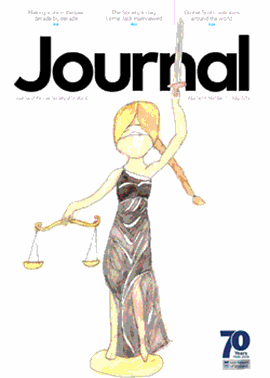The misgivings begin at the very beginning. I should stress that these misgivings relate not to the quality of the book itself, rather to the subject matter. The book comprises some 250 pages of text, the remaining 550 or so pages comprising the Act, Regulations, forms, legislation amended by the Act and a draft Statement of Recommended Practice. Other smaller works do not have the space for this. Some which I have seen simply recognise that Scotland exists, but decline to go there. The fact that the Scottish dimension is included in all the relevant parts of the book, and the differences between the two animals that are Scottish and English partnerships recognised is a tribute to Mr Bennett. This is not an English book featuring one chapter with a kilt, but one which is useful for any UK practitioner.
So why the misgivings? One only has to read the Preface to find out. A review of company and partnership law is now overdue. This Act, however, has no connection with either review, but was an attempt to protect the Big 5 accountancy firms (whether this numeral will be accurate when this goes to press is a moot point), and prevent a move offshore where limitation of liability was possible. The legislation, we are told, was enacted, “after some consultation, but little consideration in depth.” For example, we are now left with two different versions of section 110 of the Insolvency Act 1986 on the statute book. The law is so obscure that Part C of the book is an attempt to provide a statutory text of Acts applicable as modified to LLPs; however, the editors stress that this is not an authorised version, simply a “best guess application of the modifications to the existing text.” The preface ends, “The law is stated as known to, or divined by (my emphasis), the editors on April 6 2001.”
One does wonder how often this strange hybrid will be used in practice, particularly when it will generally be taxed as a partnership (unless it goes into liquidation when it will, confusingly, be taxed as a company). If that is the case, many of us may find that this volume gathers more dust than many of the tomes on our library shelves. The law will probably have to be clarified sooner rather than later, which makes me wonder, not for the first time, why many more books are not produced in loose leaf version with accompanying CD ROM.
Let us congratulate Mr Morse and his colleagues for their hard work and scholarship. Let us bemoan, once again, the undue haste and lack of attention to detail shown by the parliamentary draftsmen of today. But rush to our bookshops to buy this? I cannot help but think we will not be swamped by clients seeking the conversion.
Tom Johnston, Young & Partners Business Lawyers, Glenrothes and Dunfermline
In this issue
- Sleeping with the enemy
- No compelling grounds for retrospective legislatio
- Serving notices under the Mortgage Rights Act
- Breaking the mould
- Karl Construction strikes again
- Lure of the law still strong
- More preparation for practitioners and sheriffs
- The Preston front
- Website reviews
- Finding, keeping, sending
- Omissions cause most claims
- In practice
- A modern way to meet
- Europe
- In and out of the Houses
- Book reviews







